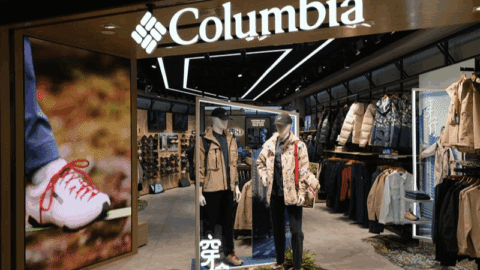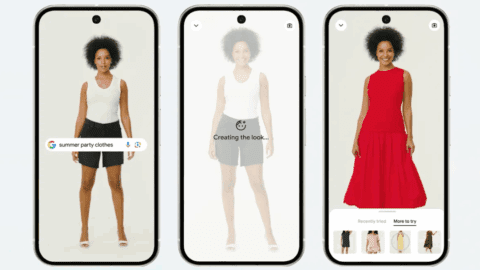It wasn’t so long ago that the debut of new digital-first brands was a near-daily occurrence. Successful “challenger” offerings in just about every category under the sun rose to unprecedented heights, almost solely on the backs of social media and good branding. But contrary to pandemic-era predictions, it turns out people still want to shop in stores, and a swath of data privacy crackdowns have brought many of these rising stars back down to Earth. DTC is still very much alive and well, but digital-first companies are having to adapt to a new normal where competition is fiercer, financial pressure is ever-present and the marketing tactics that used to work so well are no longer cost-efficient.
Three companies in the space — intimates brand ThirdLove, Shopify aggregator Win Brands Group and apparel brand U.S. Polo Assn. — took the stage at The Lead Summit in Manhattan in July 2023 to talk about how they are adapting their strategies to meet the new realities of DTC retail. The tactics they are employing aren’t necessarily new (in fact, many of them are age-old) but they are new to the DTC cohort, including:
- Looking past flashy tech and marketing gimmicks to focus on the fundamentals of what make a retail business viable;
- Finding economies of scale in the operational aspects of the business; and
- Turning to more traditional channels like wholesale and physical stores for both brand building and customer acquisition.
Focusing on the Fundamentals
With the splashy, often short-sighted, tactics that used to work no longer bringing in results, DTC brands are being forced to go back to retail fundamentals — good products and a good customer experience.
“At the end of the day, regardless of the category, it ultimately comes down to, does the product solve a true problem and is this something that you would recommend to a friend?” said David Spector, Co-founder and Chairman of ThirdLove. As a result of the brand’s “maniacal focus” on its customers, Spector said that return customers now account for 30% to 40% of ThirdLove’s business, which as moderator Richard Kestenbaum of Triangle Capital pointed out, is the “holy grail” for a DTC business.
“You took a highly technical product, where a small measurement makes a big difference, and you made it better,” said Kestenbaum. “And then you used the product to leverage your relationship with the customer, and that enables your customers do more of the heavy lifting for you, building repeats and referrals.”
Those repeats and referrals simply don’t happen without a good product and a good shopping experience, as Jose Nino, VP of Global Ecommerce and Digital Strategy at the U.S. Polo Assn. pointed out. “There’s a lot of opportunity to make DTC more profitable by ignoring the eye candy and really focusing on fundamentals,” Nino said. “Instead of focusing on all the AI stuff and the marketing tools that are available, first and foremost we focus on our product assortments. If you focus on having a good assortment [of your core products] that’s always available in every size and every color, you’re going to drive conversion a lot better than with some AI tool.
“I look at DTC ecommerce in three pillars,” added Nino. “There’s operations, technology and merchandising, and in each of these groups there’s a lot of opportunity to overspend and underdeliver.”
Operations is perhaps the least sexy of these three pillars, but its focus on sourcing allows Win Brands Group to dramatically reduce the cost of goods sold (COGS) and thereby dramatically increase the financial health of the brands it acquires. Founder and CEO Kyle Widrick said that as a result, they’ve been able decrease the COGS for most of their brands by as much as 50%.
“In the case of [hat brand] Love Your Melon, as an example, the founding team was so focused on getting the product to market and delivering great products that they ended up working with suppliers that were next door,” said Widrick. “Love Your Melon is based in Minneapolis and for many, many years there was a Minneapolis-based source of that product. With our infrastructure, we were able to take the sourcing overseas with great partners that we’ve worked with for years and drop the cost of goods on that product by more than half. What that does is it allows you to put that money back into marketing and grow the business.”
Looking for Economies of Scale
The rise of aggregators like Win Brands is another way DTC companies are scaling their businesses despite a tough market. The idea is that, whether it’s an Amazon aggregator or a Shopify aggregator like Win Brands, the company acquires businesses with a similar technical foundation and is able to grow them beyond what they could do on their own through economies of scale.
“We acquire a majority interest in these Shopify direct businesses and then we plug them into our operating system and platform to continue to scale by really focusing on omnichannel growth and profitability,” explained Windrick. “Whether you’re selling candles or blankets or rings, our bet is that 95% of that is actually the same. There are nuances in the sourcing of product and obviously on the customer acquisition side, but a big part of the business can be managed as a system with one team that’s very capable in all these areas.”
Those team members are a critical piece of the equation: “Having the size of the team and the expertise required to run a true omnichannel business is the biggest challenge,” said Widrick. “We have folks with 10-plus years of experience in 3PL shipping logistics, customer service and demand planning. The bet you’re making is that in that consolidation, you can see synergy enhancing scale, and we’ve certainly seen that.”
Getting Back to Basics with Wholesale
One of the ways Win Brands scales the companies in its portfolio is by bringing them into physical retail through wholesale relationships, a tactic that many DTC brands across the board are considering as digital marketing costs rise. However, Widrick cautioned that “sell in is less than half of the battle, you have to sell through,” which is why for his brands he focuses not just on the largest retailers but those retailers that fit the brand.
“One of the worst things that can happen is you land a large wholesale account, you inventory up and you sell it in, but it doesn’t sell through,” Windrick added. “I’ve seen dozens and dozens of those cases and it can really disrupt the business. No one has a crystal ball, you’re not going to be able to tell if it’s actually going to sell through, but [you need to be careful not to] get over your skis. Starting smaller and then getting into the bigger retailers later can sometimes be the smarter move.”
Getting Back to Basics with Stores
Another traditional retail platform that many DTC brands initially shunned but are now considering is operating their own stores. ThirdLove is doing a “tiny bit” of wholesale, said Spector, and the company just launched on Amazon, but ThirdLove’s bigger focus has been on standalone stores, of which there are now nine across the country.
“We look at our stores as a channel for building the brand, but also as a way to get people to increase their basket size,” Spector said. “We’re a brand that is very much known for bras, but we sell all these other great products that most women don’t even know about. The stores give them the chance to try and see and experience our brand in real life.”
U.S. Polo Assn also has stores around the world, quite a lot of them actually — the brand has 1,100 locations across 170 countries, most of which are operated by licensing partners. “Digital brands don’t typically have so many stores, and in the post-pandemic environment, leveraging our stores is really a competitive advantage for us,” said Nino.
The stores are not just for sales and awareness but also to aid the brand’s first-party data collection efforts. “We saw a dramatic drop-off in social media spend ROI the moment Apple started making their iOS privacy changes; it was very obvious,” Nino said. “So now we’re focusing more on first-party marketing efforts.”
One way they are doing that is by putting QR codes on the storefronts of all their stores around the world. “If people are in the mall and they walk by the store, they may not necessarily go in, but [they might scan the QR code],” Nino said. “Maybe only 2% or 3% of those people scan, but if at each location you get 10 or 15 scans, across all 300 stores in India, multiplied by 365 days in a year — it adds up very quickly. And the cost of acquiring those people is much less than spending money on a medium- or lower-funnel marketing campaign on social.”
Amid all the disruption in digital commerce today (some of it driven by DTC brands themselves), even those that have found success are very aware that this is just the beginning: “We’re still in the early days of building the brand, and great brands take decades, if not centuries to be built,” said ThirdLove’s Spector. “We have a long way to go.”















